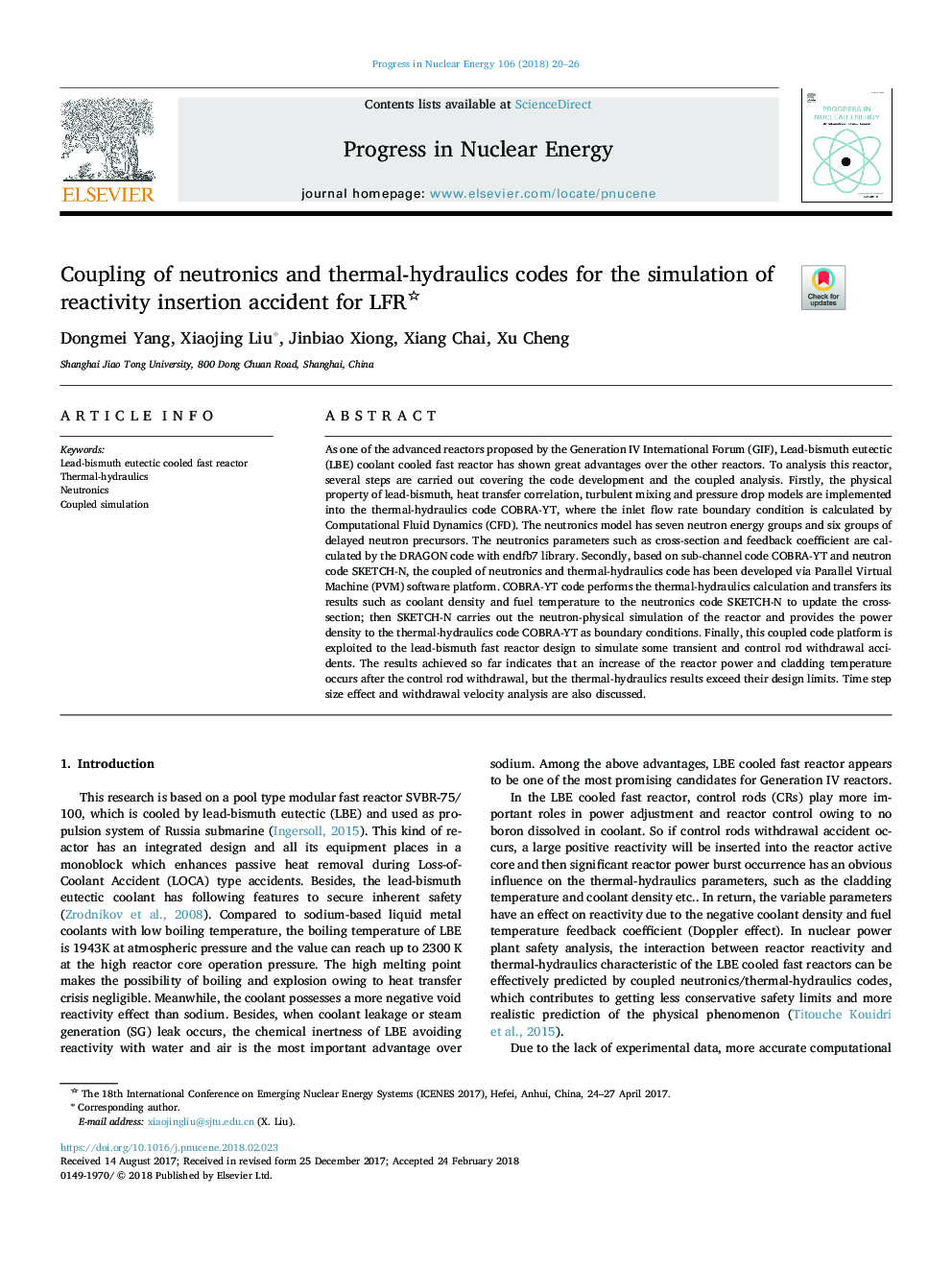| کد مقاله | کد نشریه | سال انتشار | مقاله انگلیسی | نسخه تمام متن |
|---|---|---|---|---|
| 8084226 | 1521731 | 2018 | 7 صفحه PDF | دانلود رایگان |
عنوان انگلیسی مقاله ISI
Coupling of neutronics and thermal-hydraulics codes for the simulation of reactivity insertion accident for LFR
دانلود مقاله + سفارش ترجمه
دانلود مقاله ISI انگلیسی
رایگان برای ایرانیان
کلمات کلیدی
موضوعات مرتبط
مهندسی و علوم پایه
مهندسی انرژی
مهندسی انرژی و فناوری های برق
پیش نمایش صفحه اول مقاله

چکیده انگلیسی
As one of the advanced reactors proposed by the Generation IV International Forum (GIF), Lead-bismuth eutectic (LBE) coolant cooled fast reactor has shown great advantages over the other reactors. To analysis this reactor, several steps are carried out covering the code development and the coupled analysis. Firstly, the physical property of lead-bismuth, heat transfer correlation, turbulent mixing and pressure drop models are implemented into the thermal-hydraulics code COBRA-YT, where the inlet flow rate boundary condition is calculated by Computational Fluid Dynamics (CFD). The neutronics model has seven neutron energy groups and six groups of delayed neutron precursors. The neutronics parameters such as cross-section and feedback coefficient are calculated by the DRAGON code with endfb7 library. Secondly, based on sub-channel code COBRA-YT and neutron code SKETCH-N, the coupled of neutronics and thermal-hydraulics code has been developed via Parallel Virtual Machine (PVM) software platform. COBRA-YT code performs the thermal-hydraulics calculation and transfers its results such as coolant density and fuel temperature to the neutronics code SKETCH-N to update the cross-section; then SKETCH-N carries out the neutron-physical simulation of the reactor and provides the power density to the thermal-hydraulics code COBRA-YT as boundary conditions. Finally, this coupled code platform is exploited to the lead-bismuth fast reactor design to simulate some transient and control rod withdrawal accidents. The results achieved so far indicates that an increase of the reactor power and cladding temperature occurs after the control rod withdrawal, but the thermal-hydraulics results exceed their design limits. Time step size effect and withdrawal velocity analysis are also discussed.
ناشر
Database: Elsevier - ScienceDirect (ساینس دایرکت)
Journal: Progress in Nuclear Energy - Volume 106, July 2018, Pages 20-26
Journal: Progress in Nuclear Energy - Volume 106, July 2018, Pages 20-26
نویسندگان
Dongmei Yang, Xiaojing Liu, Jinbiao Xiong, Xiang Chai, Xu Cheng,